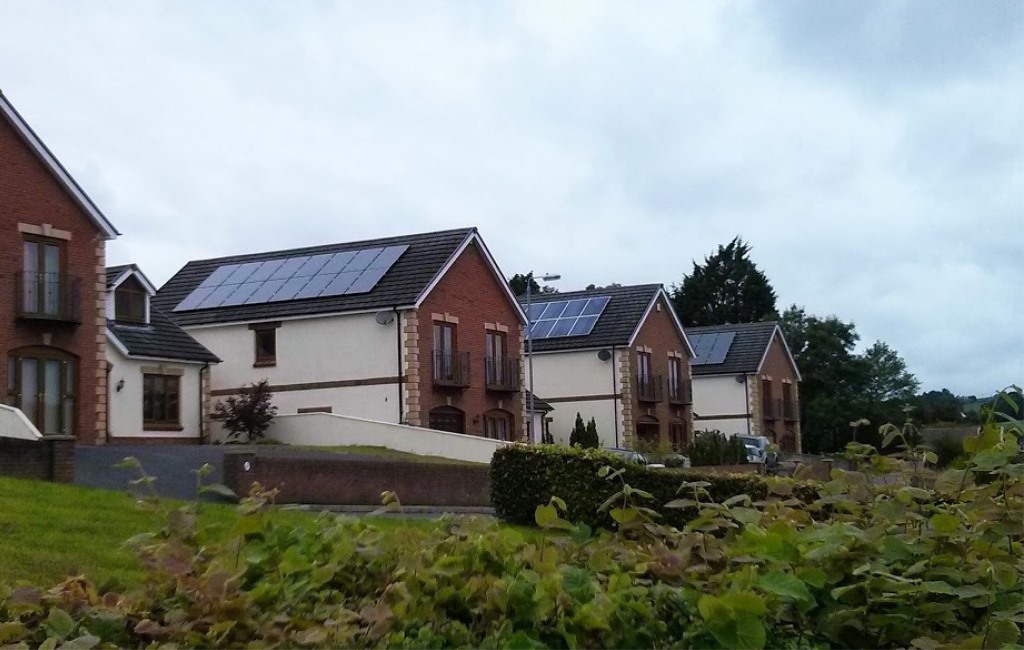
source
Nadia Smith, Policy Analyst at the REA
Renewables in Buildings; Building ‘Power’ful Homes of the Future
Building ‘Power’ful Homes of the Future
Emissions reductions from the UK’s 29 million homes have stalled, while energy use in homes – which accounts for 14% of total UK emissions – increased between 2016 and 2017. Our homes are just not good enough to deal with climate change, the CCC warns in its recent report.
Energy nerds realise the low hanging fruit is being picked (decarbonising power), and that we now need to focus on encouraging new sectors (especially construction and transport) to join the renewables transition. The Government’s spring statement highlighted their dedication to decarbonising the buildings sector, so this blog looks to review targets and policy framework, understand what the future homes package looks like, and explore its real value.
Constructing a Commitment
The government has set out its commitment to decarbonise the buildings sector, with activity this year taking place in a range of areas across building regulations, industrial strategy and transport.
The Industrial Strategy Clean Growth Mission signals a clear ambition to halve the energy use from new buildings by 2030, and also gives focus to Zero and Low carbon clusters. At first instance, this seems to be a semi-revival of the Zero-Carbon Homes Policy which was scrapped in 2015 – a policy which homebuilders took a grilling by Rachel Reeves MP, for lobbying against, in her recent BEIS select committee hearing on energy efficiency.
Building on this (cough, pun intended), the upcoming review of building regulations part L (conservation of fuel and power) will hold a new “Future Homes Standard” which looks to end fossil fuel reliance in all new buildings by 2025. Conversation around a dedicated section for renewables and low carbon technologies within the building regulations has arisen, which the REA would be supportive of. The review will also be conducted alongside a long overdue “overhaul” of the Standard Assessment Procedure (SAP 11) – the rating system used to generate Energy Performance Certificates (EPCs), with which renewables and clean technologies currently have a love-hate relationship.
The Office for Low Emissions Vehicles has also stated its intention to install EV chargers in all new homes, which stems from, and surpasses the requirements of the EU Energy Performance in Buildings Directive. The directive also addresses ICT and smart technology (such as home energy management systems and the enigmatic “Internet of Things”.
“The key to realising the potential of future homes though lies in communicating the real value to homebuyers, construction companies, valuers, financiers and the government alike”
The Architectural Plan
It is well understood that homes and buildings have a key role to play in the transition to a decentralised energy system. On-site renewable energy generation, alongside clean tech such as EV charging and battery storage systems are crucial to creating the smart homes of the future. Not only is this part of a wider movement to democratise energy by engaging prosumers and offering them the power to address climate change, but also strives to create more valuable living spaces and economically lucrative buildings for both consumers and the energy infrastructure system.
Packages offered by renewables installers already include rooftop solar PV, Li-ion battery storage or thermal storage systems, and electric vehicle smart charging. Not only does adding in the storage mean that customers are able to use all of the energy they generate at wholesale prices, but when paired with innovative “time of use” energy supply tariffs, and “Internet of Things” home energy management systems, battery owners have the opportunity to save more money by shifting their demand to off-peak times (and support the grid in doing so).
This can also offer additional revenue streams, especially in commercial buildings, like the Car Jeans Stadiom in the Netherlands, which uses an Alfen (proud REA members) energy storage, solar PV and EV charge points, to offer additional services to their football fans and buy/sell excess power helping with grid balancing. Supporting the grid in this way means that less money will have to be invested into updating the old fashioned grid – which was developed to support power going in one direction rather than back and forth as it does in a decentralised system. Bloomberg’s recent report finds that energy system costs could increase 13% by 2040, without a flexible energy system.
Laying the Foundations
Despite previously being tarnished with an “old mind-set” mentality, numerous property and construction stakeholders have come forwards to voice their commitment to development in this space (some of which signed a letter to the Secretaries of State calling on them to use the upcoming Environment Bill to set legally binding targets).
Action is now needed from government to define the policy framework, and put in place strong foundations for the industries to work together to innovate and build this space.
Our current thinking on recommended actions, which we believe must be the baseline for all new homes, includes calling for:
1. Solar PV roofing as mandatory in all new homes – building integrated PV holds an estimated payback time of 8-12 years, unlike standard roofing which is a sunk cost. This means that over their 30 year lifetime, solar roofs will not only be effectively free, but will have paid back 2-3 times their cost. This is without government support, although the proposed Smart Export Guarantee tariffs may allow prosumers to sell their exported power. Solar PV costs have been falling rapidly since their initial development, and we are now seeing innovations from UK manufacturers such as Solar Roof Tiles (which look like terracotta or slate!) falling to competitive prices.
2. Energy storage as mandatory all new homes; and grant funding or tax reliefs for retrofitting batteries (which currently pay 20% VAT when collocated with solar PV, despite new installations receiving a reduced rate of 5%). Energy storage costs are also falling rapidly, with Bloomberg NEF finding that there has been an over 73% fall in Li-ion battery pack costs since 2010. This would be another active revenue generator, as homes may be able to support balancing the grid through the proposed Smart Export Guarantee, by storing power at off peak demand times, and selling it at peak times.
3. Electric Vehicle smart charging points as mandatory in all new homes, and support for charging hubs and on-street charging where homes do not have access to off-street parking. We recommend that these are 7kW, smart enabled chargers, to allow charging at optimal times once time of use tariffs become common.
4. Three phase supply as mandatory in all new homes; to support electrification of heat and optimise energy generation (currently homes can only take a load of 3.6kW, so solar PV installations over this are wasting electricity generated at peak supply times). Our Three Phase Supply report found that the additional cost to home builders would be a small additional cost per home for cabling, and details information on distribution boards and termination boxes which would also be required, but at a minor cost. A review is also needed of grid connection costs for new developments, as currently DNOs must overestimate demand for homes (assuming a lack of flexible demand, under standard P 2/6). This is in the works, and we may see adjustments under standard P 2/7 very soon. More information on three phase supply can be found in Daniel’s blog here.
The Future of Homes
The future homes package already exists in terms of technology. Prices continue to fall, and renewables and clean technologies offer active investments in buildings rather than sunk costs. The key to realising the potential of future homes though lies in communicating the real value to homebuyers, construction companies, valuers, financiers and the government alike. We will continue to build partnerships with the construction industry, and organisations such as the Royal Institute of Chartered Surveyors (with whom we hosted a joint event in November) to communicate this opportunity. But, it is now down to government to lay strong foundations for cross-industry collaboration drive forwards the buildings mission and meet our Clean Growth Targets.

